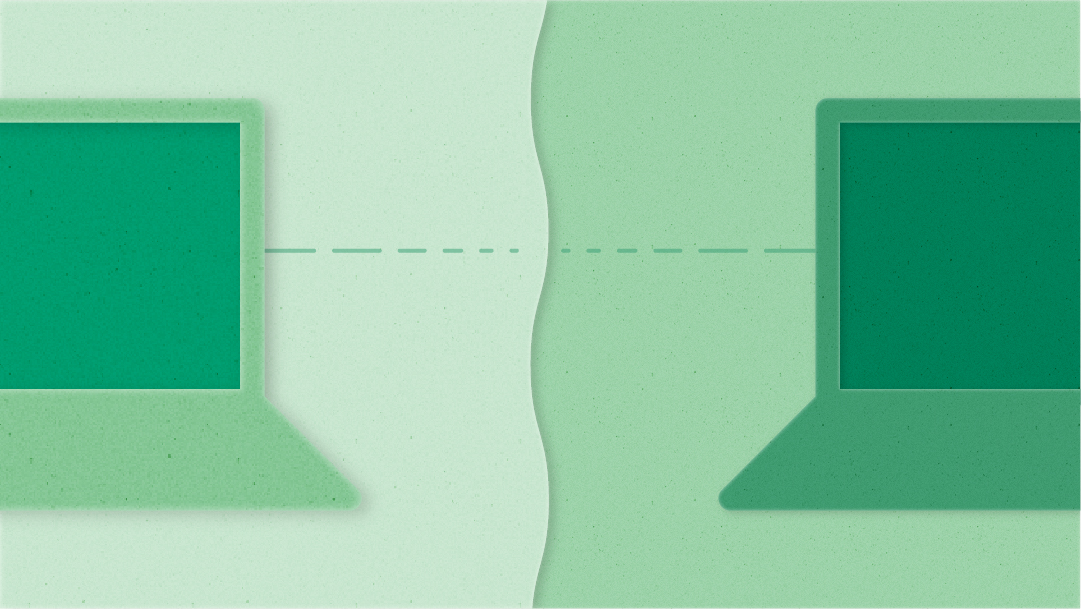As more people are being asked to work from home, many find that staying focused and continuing to deliver results requires a new set of skills and tools. Remote work takes a bit of effort and planning to make it, well, work.
Here are seven ways that you can rethink your time spent working from home so you can stay productive and make the most of your newfound work/life overlap.
1. Rethink your commute
Even though you may not have to slog through traffic or ride the bus into work, keep the same routine you used to when you went into the office. Instead of rolling out of bed to your laptop, build in a “commute” buffer to let yourself ease into — or out of — your workday. Go for a walk before you begin working and once you stop your work day. This serves as your commute and can help you get into the right mindset to jump into — or decompress from — your day. Also, if you listen to music or podcasts during your normal commute to stay informed or just to be entertained, consider using this time to keep listening to your favorites.
2. Dress for success (and for video conferencing!)
In addition to maintaining your “commute,” keep to your normal workday routine as much as possible. Get up at the same time, shower, and get dressed. While the idea of working from home in yoga pants and a top bun may appeal to some, getting dressed for work can get you in the right mindset by creating a mental boundary between “home” and “work.” And some research indicates that how you dress can even change the way you perform.
Once you’re ready, take the time to set up an optimal video conferencing shot. This is your public face when you’re working from home and worth spending a little time on. Adjust your background, light sources, and camera angle accordingly. (Some video conferencing software even lets you change your background.)
3. Set expectations for communication
Communication and collaboration look different when everyone’s working from home. You lose that water-cooler effect of brainstorming, and you can’t just stop by someone’s desk to chat informally. Getting the information you need to move work forward might require different tools.
Be clear about how you plan to communicate with your team and which channels and tools you plan to use to get a hold of them throughout the day. Use video conferencing to add a more personal dimension to your calls. Share cell numbers as appropriate for quick phone calls. Start a chat thread with a message to your team of the game plan for the day, what you’ll be working on, and what to expect. Consider a collaborative work management tool to help facilitate the collaboration and transparency you need to stay connected across your team and your organization.
You may also want to set up regular one-on-ones with your team, even above and beyond your regular meetings with your manager. Even if it’s just a 15-minute chat, once a week, you can gain back some of that comradery and relaxed idea generation you might miss when you’re not in the office together. Some video conferencing software offers whiteboard capabilities to help you keep brainstorming with your team over video chat.
4. Stay accountable to your team
When you’re working from home, your team no longer has the visual cues they’re used to in an office to tell them whether or not you’re available. While your schedule at home may need to be a bit more flexible, don’t just log off if you need to take care of personal or family needs. Let your boss and your team know where you are or are going to be.
Schedule your start and end times, as well as your lunch breaks or workout times on your calendar. And if something unexpected comes up, chat your team to let them know you’ll need to step away from your computer for a while. If your circumstances require a more flexible schedule, communicate your flexible work hours as needed to your manager and team members.
5. Take breaks — away from your computer
It’s easy to just sit at your computer all day, but the reality is you won’t be as productive unless you allow for natural breaks in your work. Set a timer or a calendar reminder for yourself to take a break in between focused periods of work.
Also, be sure that your break time includes physically getting up from your computer to move around. You get up from your desk at work, right? Make sure to do the same at home. A quick brisk walk around your neighborhood might do the trick (bonus if you have a dog who can enjoy the walk with you — or if you’re more of a cat person, get up and give your resident feline a pat). You might also take the opportunity of being at home to do some stretches, practice yoga, or get a quick workout routine in during one of your breaks.
Another good break is to take a few minutes to give your eyes a rest. Pick a favorite playlist (check out our #SheetMusic Spotify playlists) to listen to with your eyes closed or try out a meditation app. You’ll return to your work refreshed and rejuvenated.
If you are working with children at home, consider including them in your breaks. Or let them come up with a five or ten minute activity to do together during your time away from the computer.
6. Stay social
Just because you’re not gathering together, doesn’t mean you can’t stay connected on a personal level as well as a professional level. Use the technology at hand to socialize with your co-workers. Try a virtual team happy hour, virtual coffee dates or “water cooler” chats, or schedule an open video conferencing channel for people to be on while they’re working to simulate more spontaneous conversations.
You might also take some time — during your commute time or otherwise — to nurture your network. Reach out to people you used to work with and see how they’re working from home, or make a virtual coffee date with a colleague you don’t work with regularly.
7. Stay focused
Staying focused while working from home can be challenging. You may have children or other loved ones seeking your attention, or find yourself distracted by your home to-do list. The news can even be an unwelcome distraction, even as you try to keep up with what’s happening.
Taking breaks can actually help you stay focused. Use calendaring to break up your tasks — and schedule breaks so you’ll know when you can stop working to check in with your kids or read the latest headlines.
As you work from home, pay attention to what’s distracting you and plan around it. When you log off for the day, clean up your home environment so it’s not a distraction. Pack your lunch every morning (or the night before) so you don’t have to figure it out on your lunch break. And if your interruptions come from a barking dog, put a sign on your door telling delivery workers not to ring the doorbell. (Likewise if you have children napping.)
Working from home may require a new set of skills and some unique considerations, but with planning and persistence, you can keep work on track and continue to deliver results from home.



